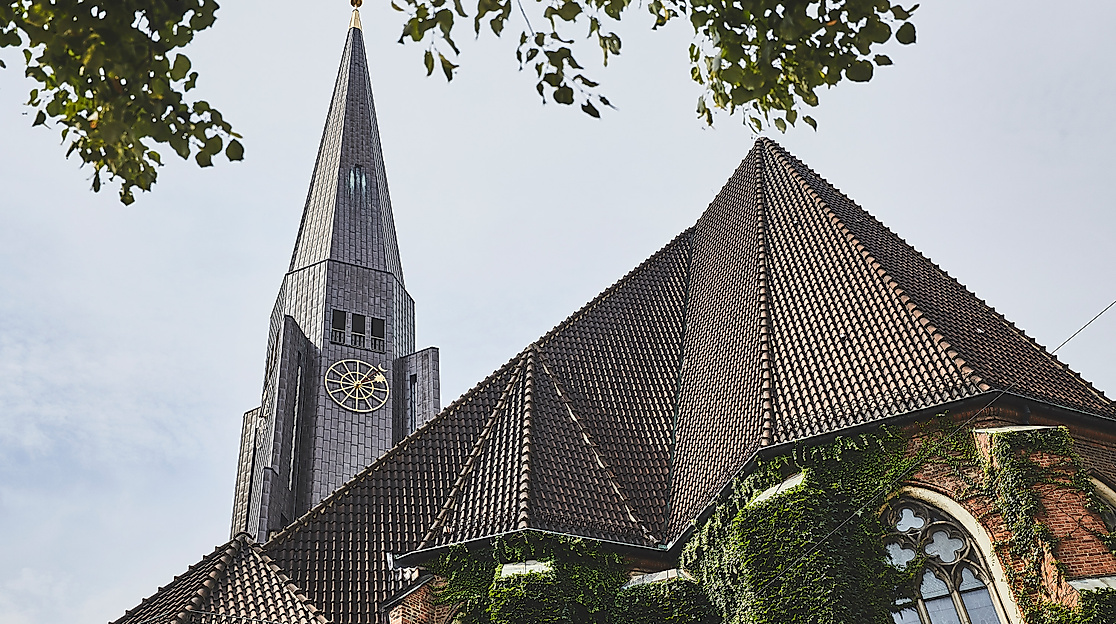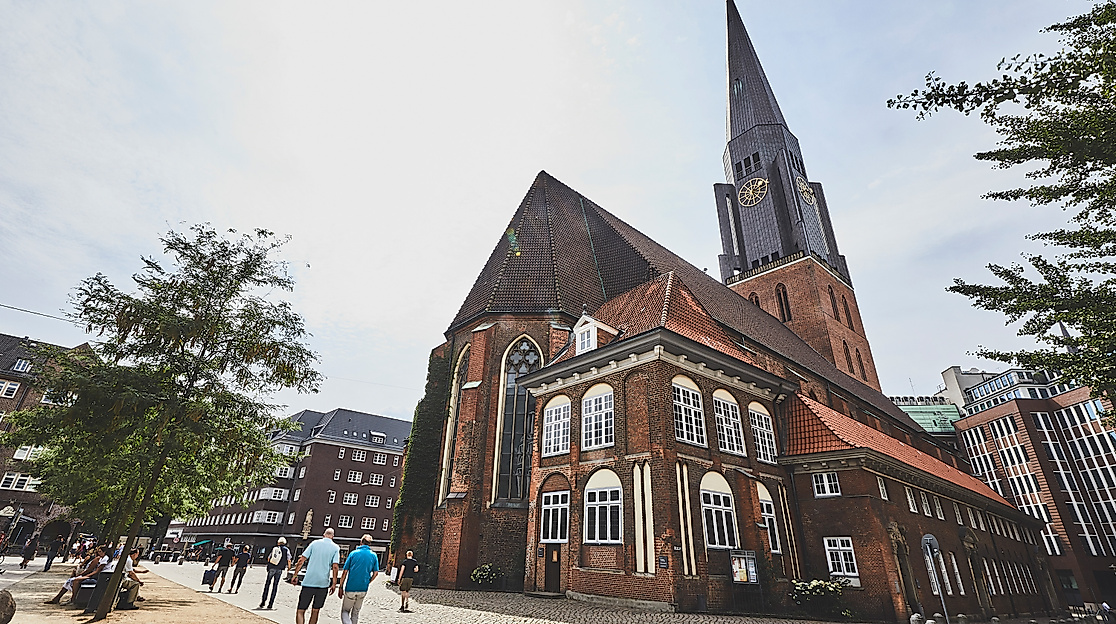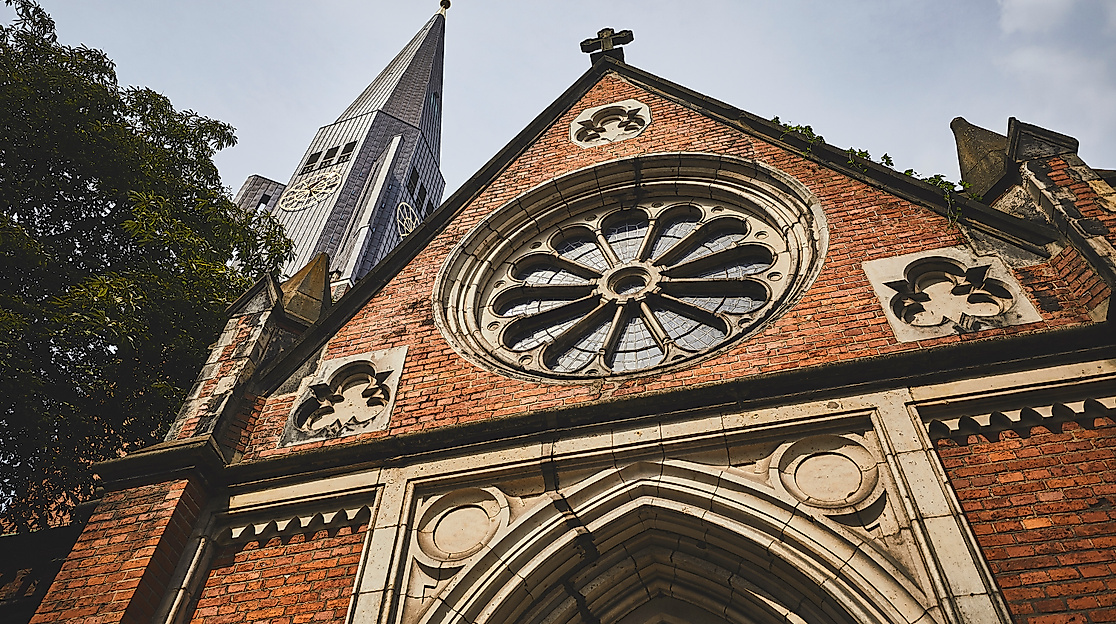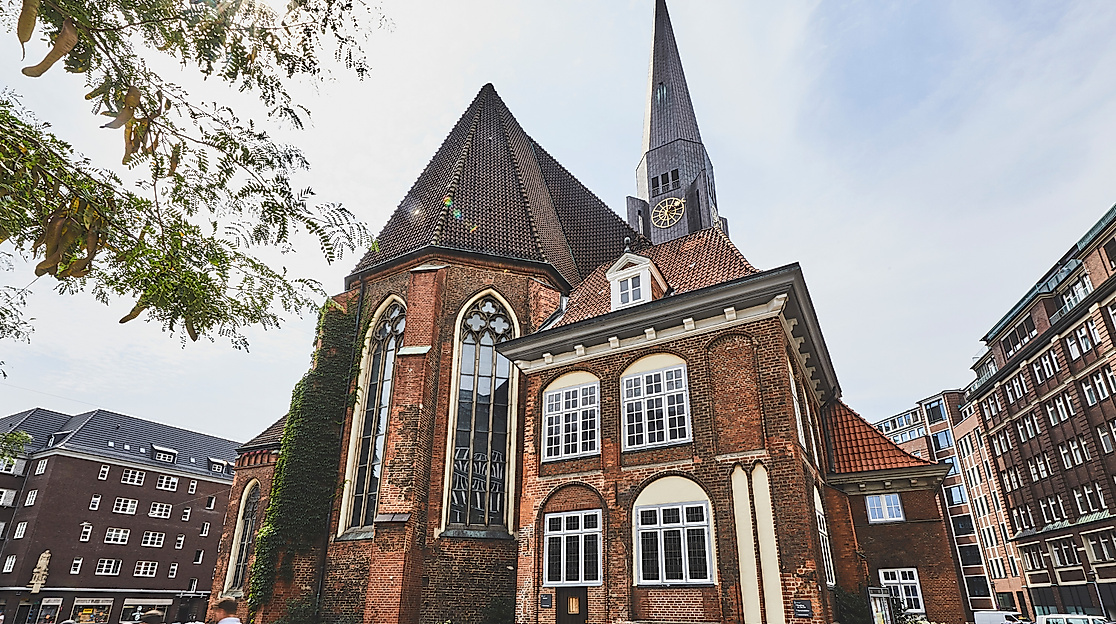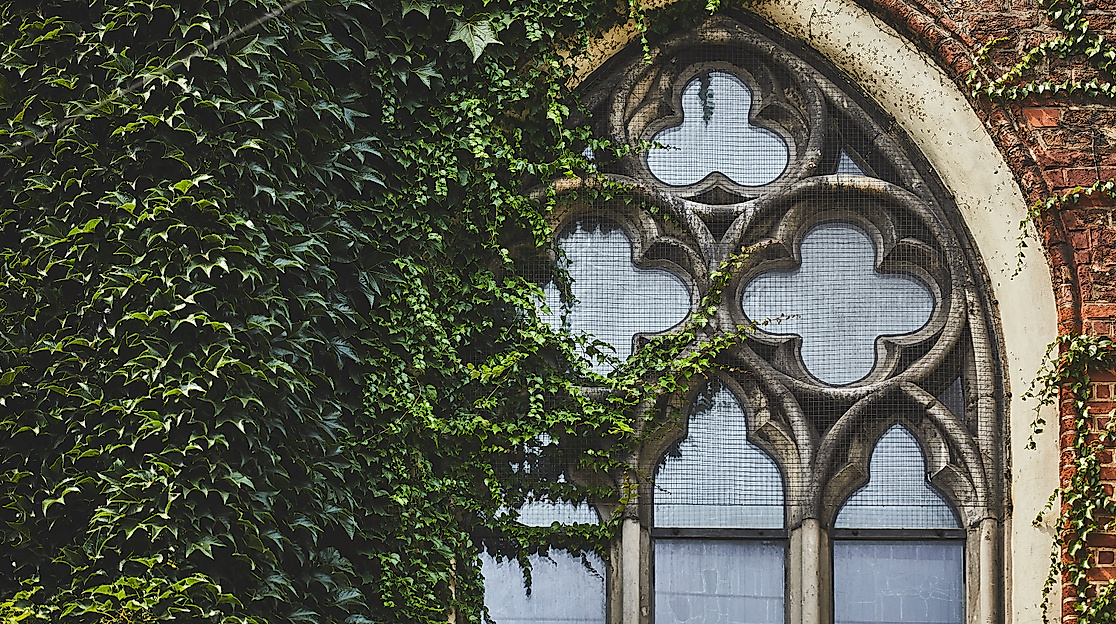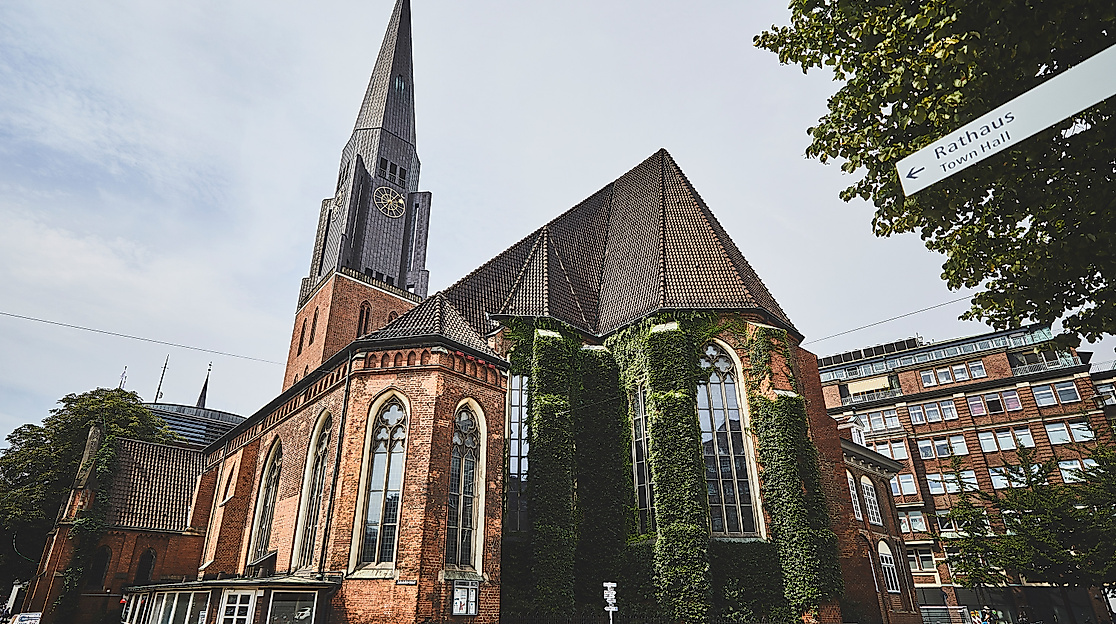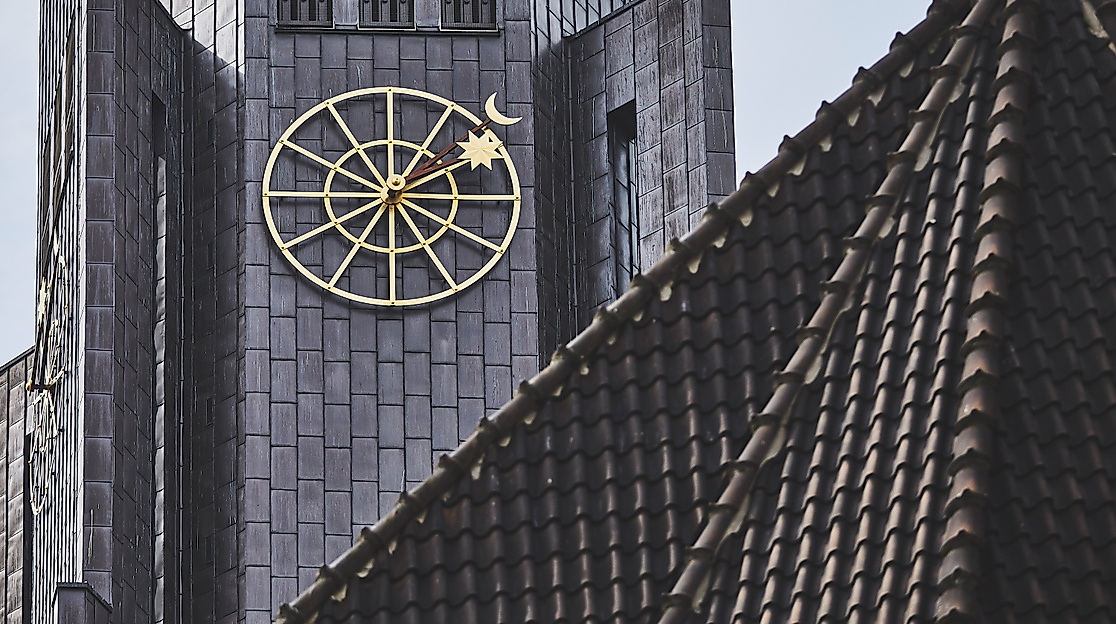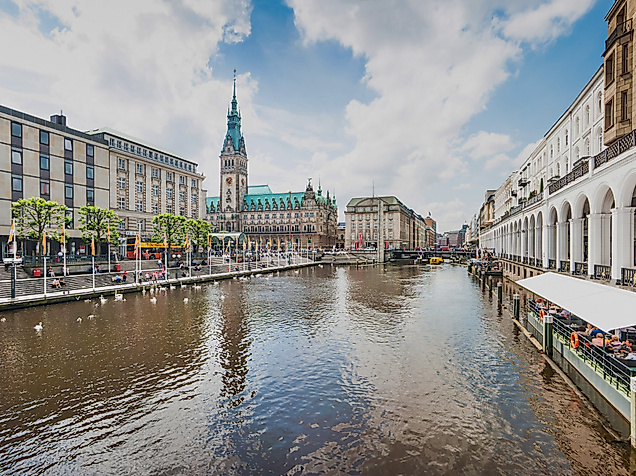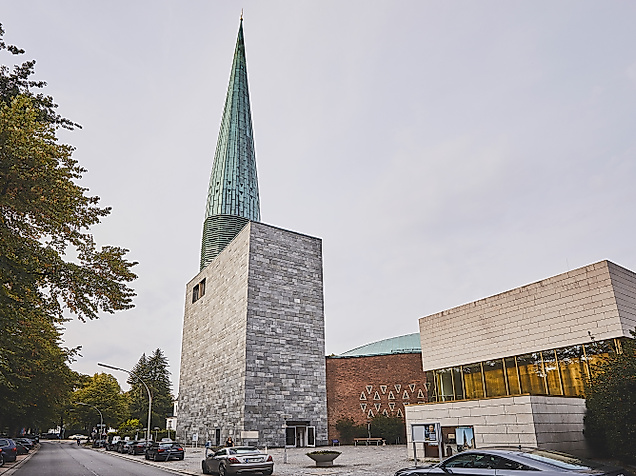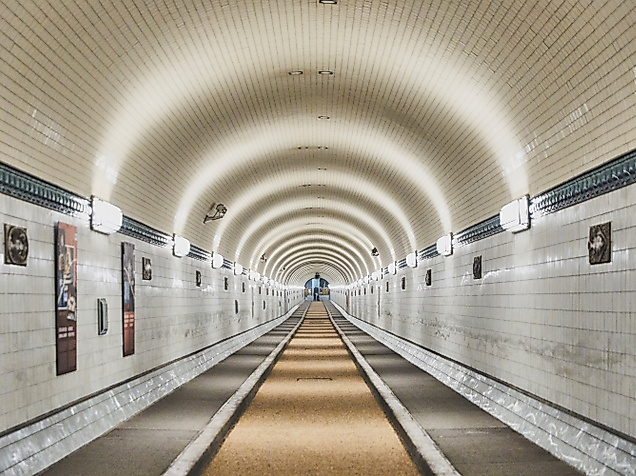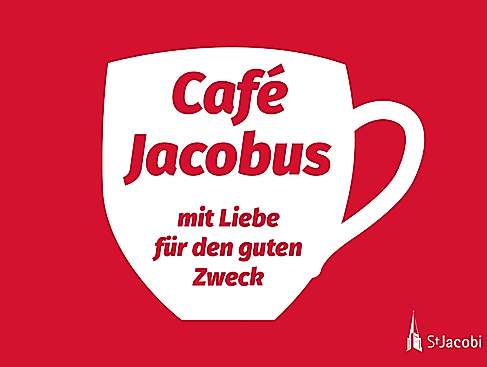
St. Jacobi
The main church of St. Jacobi was built during the 14th century and is filled with ancient treasures. One of the most prominent of these is undoubtedly the famous the Arp Schnitger organ dating from 1693 - the largest preserved baroque organ in the northern Europe.
It was extensively restored between 1989 and 1993 and it can now be heard at every Sunday service. In addition to organ concerts, it is not just the organ that attracts a specialist public from around the world.
Equally worth seeing are the three medieval altars: the St. Trinitatis Altar in the main choir (circa 1518), the St. Petri Altar in the 1st southern nave (1508) and the St. Lukas Altar in the 2nd southern nave (circa 1500) from Hamburg cathedral. Medieval piety did not allow the interiors of these shrines to be opened as a daily routine. They are only open on Sundays and holidays, otherwise only the painted reverse panels are seen.
By the way, one of the reverse panels of the Lukas Altar reveals a custom from the Middle Ages: the sponsor had images of themselves painted into the picture. Would any benefactor today be so shameless as to put his pride on display in such a manner?
